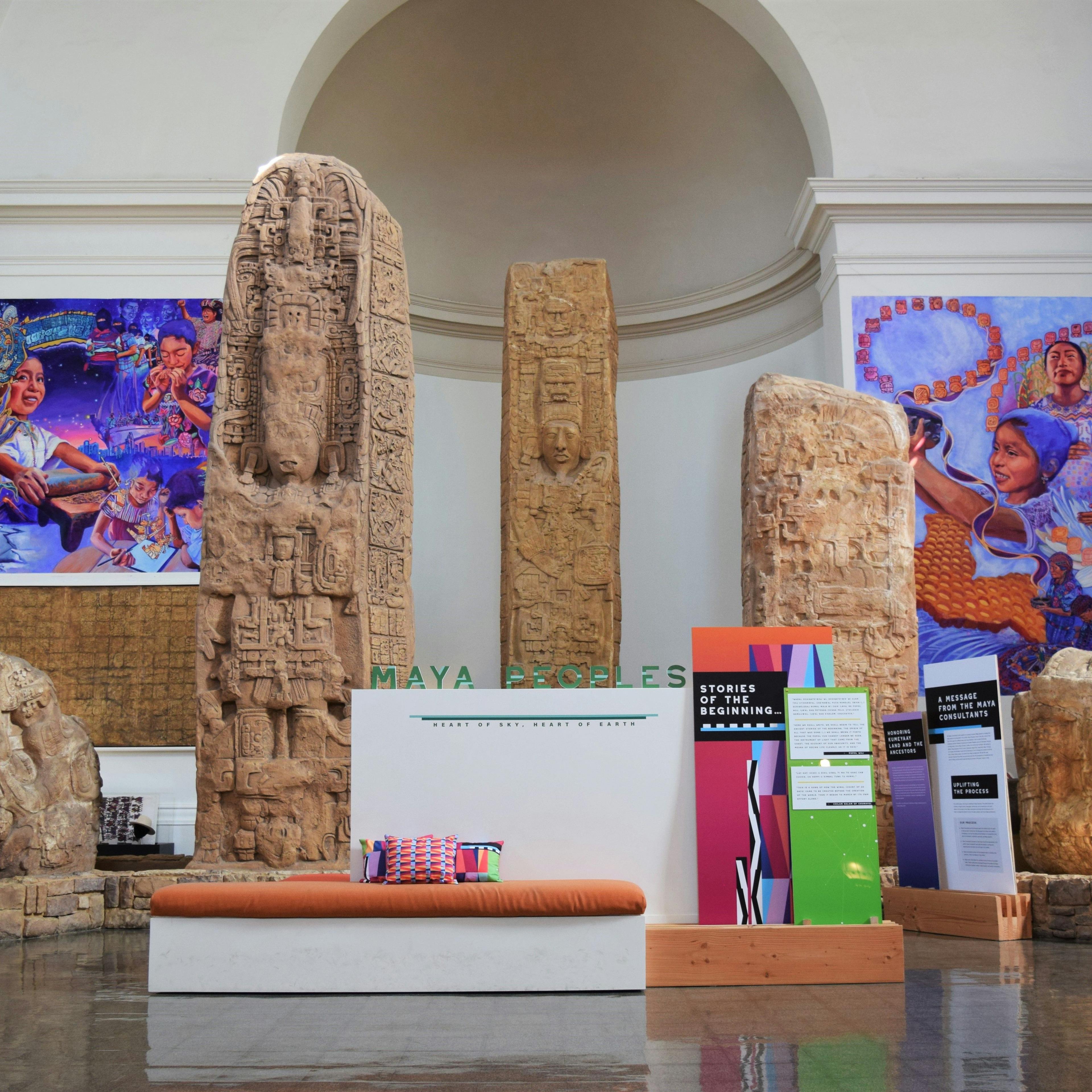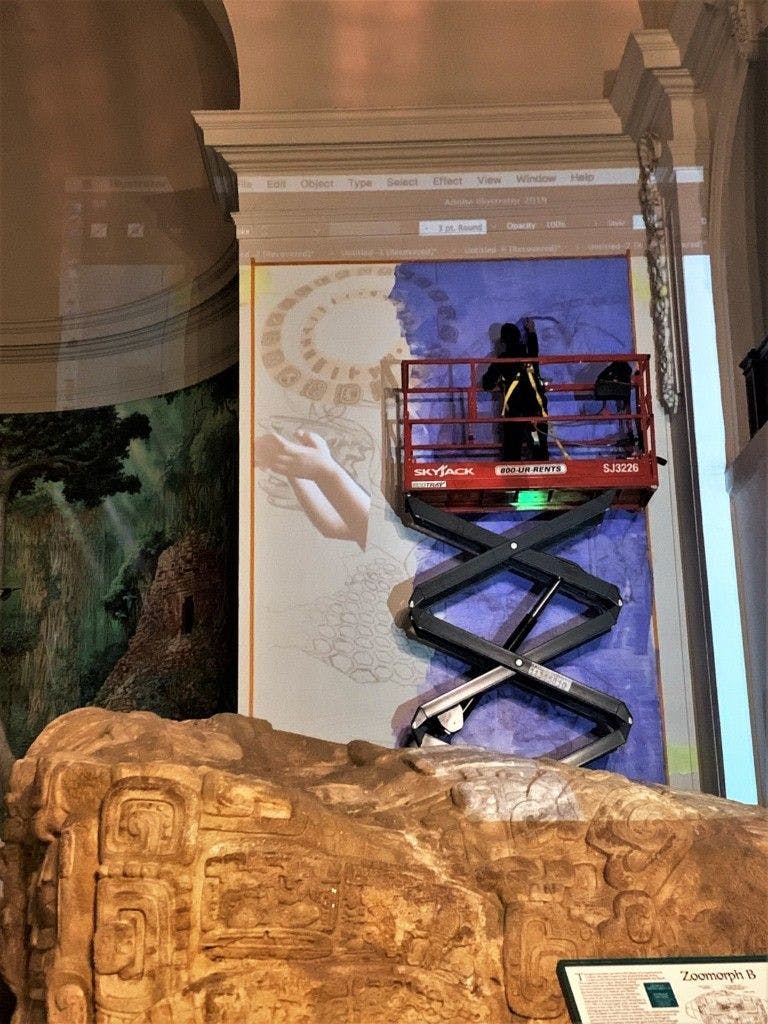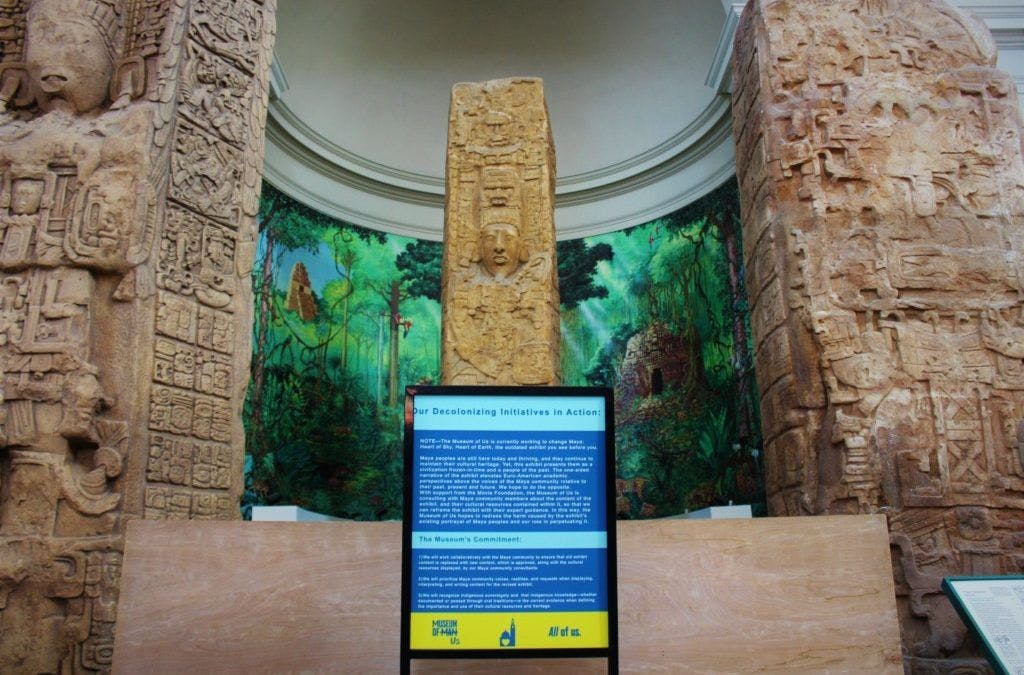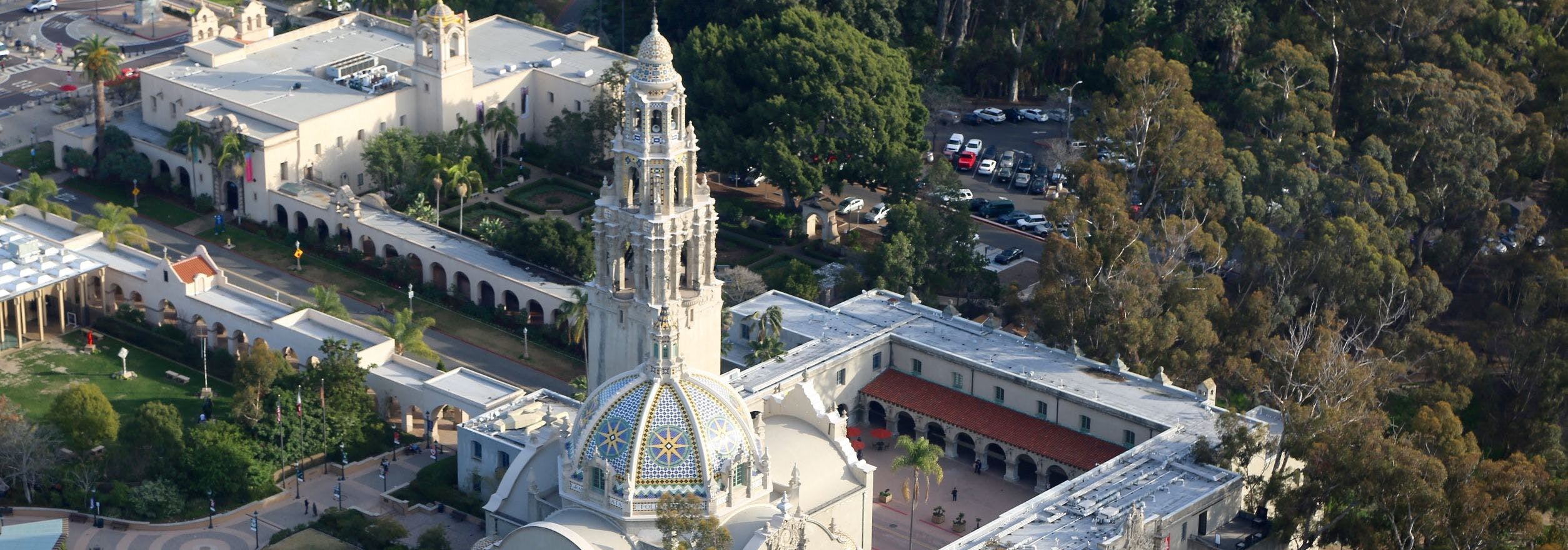The Museum is open daily from 10 a.m. to 5 p.m.
The Museum is open daily from 10 a.m. to 5 p.m. Plan Your Visit
Decolonizing Initiatives

We recognize that our mission can only authentically be fulfilled through a decolonial process that centers around truthfulness, accountability, and reconciliation. We call this process our decolonizing initiatives. The heart of our decolonizing initiatives work is to acknowledge and redress the ways that our museum participated in the colonial enterprise, both intentionally and unintentionally.
Guiding Principles
The Museum’s decolonizing initiatives are inspired by Ho-Chunk Scholar Dr. Amy Lonetree’s work in her seminal book Decolonizing Museums. The Museum’s decolonizing initiatives are driven by four guiding principles:
Truth Telling and Accountability
We acknowledge that our Museum, like many other museums, emerged from the colonial endeavor, white supremacy, and the self-righteous belief that, “to the victor go the spoils.” We recognize that the vast majority of the objects that reside in, and are stewarded by, the Museum came to us through an inequitable and colonial pathway. To learn more, please see the history section on this page and review our Colonial Pathways Policy.
Rethinking Ownership
We are working to ensure that the cultural objects and ancestral human remains that we hold and steward in our Cultural Resources department are only in our holdings under consent from their associated communities. Recognizing Indigenous Peoples’ sovereignty is essential in this work; particularly, in relationship to how Indigenous intellectual property rights (tangible and intangible) span across time and space. The foundation of this work is to ensure that we work collectively with Indigenous Peoples to repatriate and/or steward associated items based upon their wishes and needs.
Organizational Culture Shift Supported by Systems and Policy
The Museum is committed to ensuring that this work is an ethically sustainable shift in our practices, culture, and organizational model. We have implemented several policies to reflect this effort. Two examples of these types of policies are the Curation of Human Remains Policy and the Colonial Pathways Policy.
Our decolonizing initiatives policies recognize Indigenous sovereignty and the legitimacy of Indigenous knowledge and shared narratives, whether documented or passed through oral traditions. We acknowledge and believe that Indigenous knowledge is the most reliable evidence when defining the importance of cultural resources to an Indigenous community. Prioritizing Indigenous knowledge and decisions allows us to begin to correct the harm non-Indigenous authorities created by disregarding the expertise and wishes of Indigenous communities.
Indigenous Representation
Representation matters, and is an integral part of decolonial work. Our goal is to have Black, Indigenous, and People of Color (BIPOC) representation and voice integrated within all levels of decision-making. We are a cultural anthropology museum that stewards and cares for cultural resources from a global population–representing more than 150 Indigenous communities within the United States, and over 200 Indigenous communities internationally. We believe it is imperative that our organizational model is accountable and works toward reflecting similar representation.
History of Decolonizing Initiatives
When we began the critical examination of our institution, we immediately found that over the course of its history the Museum had acquired the bodies and belongings of Indigenous people, in the United States and globally, in ways that were legal but unjust or inequitable.
A surface-level examination of the Museum’s acquisition ledgers shows hundreds of legal donations and purchases over a century that filled our storage rooms with tens of thousands of heritage items.
However, a close examination of these transactions reveals a more complex story. Here are two examples among thousands that have their equivalents in museums around the world:
- A collection of Apache items donated by local San Diegans in the 1950s was originally collected by US military personnel stationed on the San Carlos Apache Reservation in Arizona during the Apache Wars, a period of violent conflict between the US government and the Apache people that resulted in the forced relocation of the Apache people.
- Another group of items was procured by members of the Stanley Porteus expeditions in Australia. Porteus studied Aboriginal Australian communities in order to bolster his white supremacist racial theories.
For a vast majority of our acquisitions, the transactions that caused belongings to leave Indigenous communities are often obscured by a lack of transparent or available documentation in our records. By simply labeling displayed items with a donor or purchase acknowledgment, the Museum effectively erased the genocide, warfare, displacement, and oppression perpetrated against Indigenous communities. Furthermore, by rarely including Indigenous voices in decisions made about the presentation or stewardship practices of their ancestors and belongings, our institution perpetuated the ongoing colonization and appropriation of Indigenous cultures.
Current Initiatives & Recent News
Implementing the Decolonizing Initiatives Strategic Plan and associated policies will be our work for the next several decades. This work will be infused within the fabric of our organizational model, including but not limited to fundraising, finance, governance, visitor experience, marketing and communications, and even human resources.
We recognize that a core tenant of this work means we will need to consult with descendant communities on about 80 percent of the Museum’s approximately 75,000 ethnographic items and archival and audio-visual material, as well as all the archaeology from more than 1,000 sites. We are committed to ensuring that the first phase of the work is centered around our homeland community, the Kumeyaay Nation. Given our limited capacity, this work will take time. However, our Board of Trustees and staff are deeply committed to the implementation and sustainability of the Museum’s decolonizing initiatives.
We also recognize many of our past exhibits are deeply colonial. We seek to redress the harm caused by these exhibits by prioritizing community consent, anti-racism, and decolonization as part of our exhibition development process. We plan on revisiting and updating specific exhibitions with the expertise and guidance of the communities represented within them to give those voices the authority to tell their own stories.
Please direct any inquiries about this work to decolonizing@museumofus.org.
Recent News



Visit our blog for more posts on Decolonizing Initiatives.

Land Acknowledgment
The Museum of Us recognizes that it sits on the unceded ancestral homeland of the Kumeyaay Nation. The Museum extends its respect and gratitude to the Kumeyaay peoples who have lived here for millennia. They continue to care for and maintain connection to this ancestral homeland.
The Kumeyaay Nation maintains their political sovereignty, governance, and cultural traditions. The Kumeyaay Nation is a culturally vibrant Indigenous community full of dedicated artists, educators, professionals, innovators, leaders, athletes, culture bearers, parents, and caregivers.
Tradition, culture, and family are at the heart of Kumeyaay peoples’ way of life. It is through this pathway, that the Kumeyaay community celebrates their resilience, honors their ancestors, and strengthens the path for future generations.
We respectfully acknowledge the tremendous contributions of Kumeyaay peoples, and their ongoing stewardship of this land. We honor and respect Indigenous sovereignty and Indigenous Peoples’ right to self-determination. We are grateful for the ongoing guidance graciously provided by Kumeyaay Nation tribal members and leaders.
Why does the Museum have a land acknowledgment?
We recognize that our mission can only authentically occur in the context of truthfulness, transparency, and reconciliation around the ways in which our Museum participated in colonial oppression. One of the steps within our decolonizing process includes upholding an Indigenous Peoples land acknowledgment. This statement recognizes that the Museum sits on the ancestral homeland of the Kumeyaay Nation, the Indigenous Peoples of this land, who have lived here since time immemorial. An official land acknowledgment is one of many steps we are taking to build a more equitable, inclusive, anti-colonial, and racially-just space.
What is the purpose of a land acknowledgment?
A land acknowledgment is a formal statement and public recognition of the Indigenous Peoples who have been dispossessed and displaced from their ancestral homelands and territories due to a variety of colonial and historical reasons. This statement acknowledges that an organization, a city, a park, or any other structure was built, and operates, on Indigenous Peoples’ ancestral homelands.
Why are land acknowledgments important?
Land acknowledgments are not about placing blame. These statements are the first step towards building a more inclusive future where we eliminate the ongoing erasure of Indigenous Peoples’ voices, lives, and history, globally. Land acknowledgments can be an entry point and pathway for education. Our land acknowledgment statement may be a visitor’s first experience hearing about the Indigenous Peoples in the area, which gives the Museum an opportunity to seed the path for learning and respect.
These statements are a testimonial of honor paying respect to the original Indigenous Peoples of the land and uplifting their presence in society today. Acknowledging the Indigenous Peoples of the land is more than saying a few sentences—it is displaying humility, building trust, and being accountable for working towards a more inclusive and equitable future.
How will a land acknowledgment show up in the Museum?
The Museum’s land acknowledgment, which recognizes the Kumeyaay Nation, is present in a variety of areas within the building. The land acknowledgments can be found in exhibitions and museum signage; on the website; in staff email signatures; at the beginning of tours; during media interviews and fundraising events; and before consultations and our Board of Trustee meetings.
Resources & Policies
The Museum of Us recognizes that it sits on the unceded ancestral homeland of the Kumeyaay Nation. The Museum extends its respect and gratitude to the Kumeyaay peoples who have lived here for millennia.
The Museum is open daily, Monday through Sunday, from 10 a.m. to 5 p.m.
1350 El Prado, San Diego, CA 92101